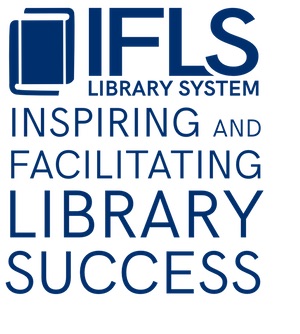Storytime Resources
Can’t find what you’re looking for here? Use this search box to search the IFLS Article Index.
Need help answering specific questions or finding additional resources?
Click on the green HelpDesk button and we’ll make sure the right IFLS staff gets that message right away. Can’t find the green button? Use this email: helpdesk@ifls.lib.wi.us.
There’s no wrong door! You can contact these IFLS staff for support on this topic:
Leah Langby, Library Development and Youth Services Coordinator langby@ifls.lib.wi.us
Fingerplays, Songs, and Movement
Fingerplays, songs, and movement are all important elements of storytime. Rhyming helps children develop their phonological awareness, using their bodies engages other parts of their brains, and often a well-placed fingerplay, song, or movement activity helps keep children focused and able to participate.
If you are using themes, you don’t need to fit ALL of your songs and fingerplays into the theme. It can be more effective to stick to really great ones, regardless of theme. Remember that repetition is great for kids!
- StoryBlocks from the Colorado State Library includes high quality videos of rhymes and songs in English and Spanish. A great way to learn new material!
- Jbrary has youtube playlist that includes videos of two librarians demonstrating songs, many with American Sign Language.
- So Tomorrow Blog has some excellent ideas for playing with parachutes and nursery rhymes
- Rhyme Database has 130 rhymes, put together by Storytiming blogger Cate Levinson
Arts and Crafts
- Meri Cherry Art Studio: 50 Process Art Activities. Process art allows kids to explore mediums and is developmentally appropriate for preschoolers. PLUS, it takes less preparation time.
- Reimagining School Readiness Toolkit has lots of background on the kinds of projects and approaches that are great for developing a growth mindset, plus specific activity suggestions.
- The Artful Parent has excellent ideas for process art.
- No Time for Flashcards is a blog created by a mother and early childhood educator. There are several projects and activities with explanations of some of the skills that are being developed. Some of the projects are best for doing with smaller groups, but many could easily be adapted to larger groups.
- MaryAnn Kohl’s Process Art Facebook Page. You have to join this to access content, but there are plenty of terrific ideas shared.
- KinderArt is a website with art project ideas that can be sorted by age, medium, and more.
STEM Activities (Science, Technology, Engineering, Math)
- ALSC Blog has several STEAM programs described, they are gathered here
- The Show Me Librarian has a whole STEAM section, including programs for preschoolers and older
- Bedtime Math has daily fun math activities
- Reimagining School Readiness Toolkit has lots of background on the kinds of projects and approaches that are great for developing a growth mindset, plus specific activity suggestions.
- National Association for the Education of Young Children suggests activities and why to do them
- Head Start Early Childhood Learning & Knowledge Center Early Science Learning for Infants and Toddlers
- Head Start Early Childhood Learning & Knowledge Center Understanding STEAM and How Children Use It
- Resources about Screen Media and Children
Child and Brain Development
- Harvard Center for the Developing Child has rich information about brain development, including short videos, activity suggestions, and more.
- Reimagining School Readiness Toolkit has lots of background on the kinds of projects and approaches that are great for developing a growth mindset, plus specific activity suggestions.
Making Storytimes and Youth Programming More Inclusive
- Check out the Resources on Accessibility and Inclusion IFLS article.
- The Inclusive Library Spaces and Programs for Young Children Library Program Self Assessment (2025) is a 7-page check-list to help you evaluate your library’s offerings for young children and their families. Produced by the SCALE project at the University of Kentucky, University of Missouri, and Emporia State University.
- Sensory Storytimes include more sensory elements and are more accessible to children with a variety of sensory issues, including kids on the autism spectrum. Consider incorporating these some or all of these elements into your storytime to ensure that your storytimes are more accessible to kids with disabilities!
- Sensory Storytime: Tips and Tricks for a Successful Program ALSC blog post by Kaitlin Frick
- Library Service for All: Current Trends in Library Programs and Services for Autistic Children and Teens 2022 webinar and resources from Infopeople
- Autism-Ready Libraries Toolkit, created in 2023 by the University of Washington iSchool, includes librarian training modules, sensory audit checklists, and storytime lesson plans.
